Everything You Need To Know About Kitchen Flooring
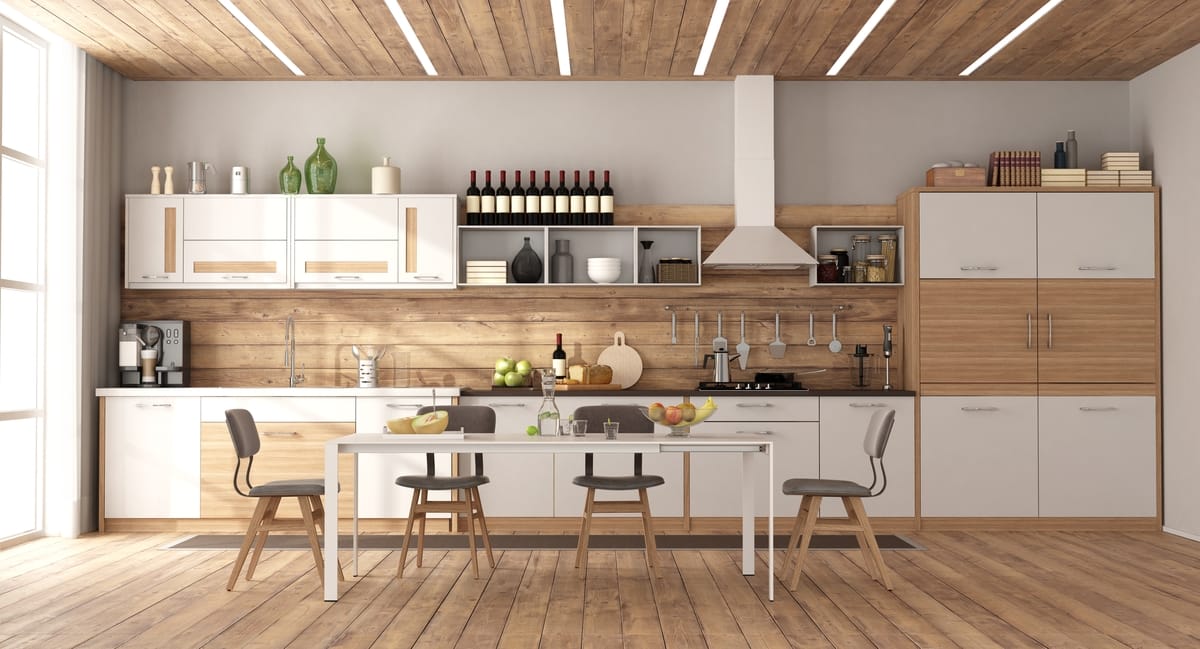
When designing your new kitchen, give as much consideration to your floor as you do to worktops and cupboard doors. You need to take into account, durability, safety, ease of cleaning and style. To bring the overall look of the kitchen together your flooring needs to work with the kitchen units and worktops, modern schemes look great with laminate and matt porcelain, whereas traditional designs go well with natural stone or warm wood. The industrial look is popular at the moment which works really well with polished concrete giving a chic feel. Whereas, oak floors, units and worktops all used together would be overkill and would make a room feel claustrophobic.
As there is such a wide range of flooring materials available, we have put this article together and given some useful information and tips about each type of flooring below - we hope you find it helpful.
1. Consider the overall look you are trying to achieve
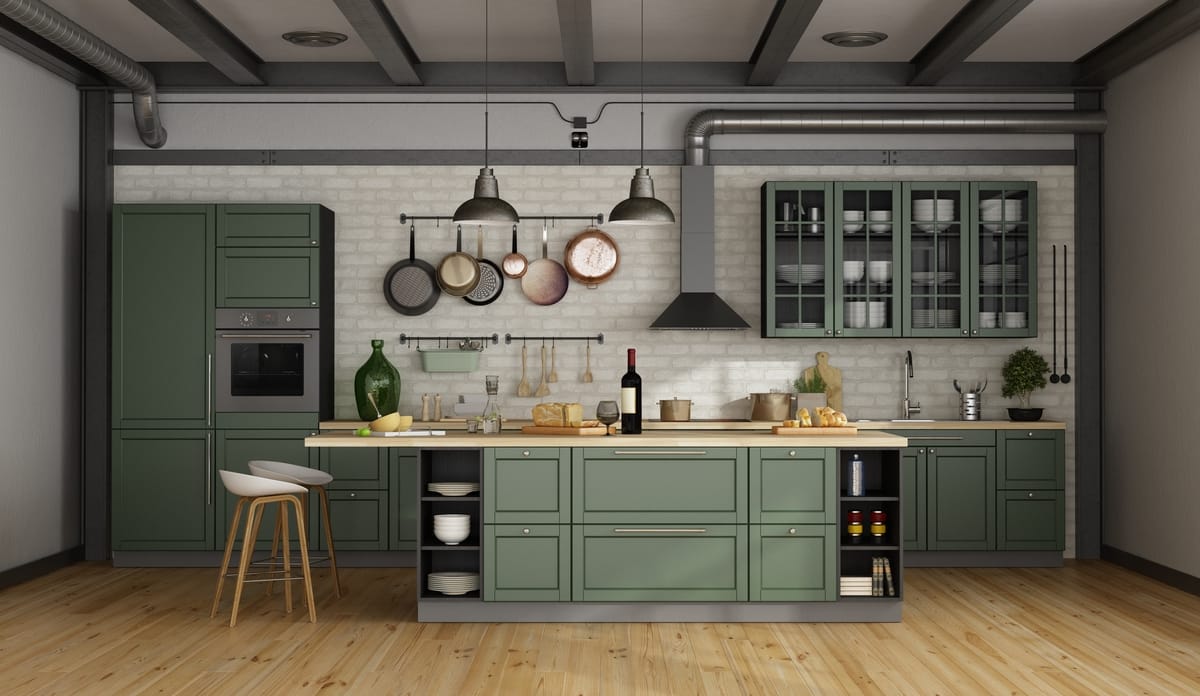
As we said above, your flooring needs to work with your units and worktops, so either go for a coordinating look with floor material that matches your worktop, or create contrast between the two.
When we say coordinating, we mean using materials with the same finish and colour. Or choose a material that can be used for worktops and floors. As an example an oak worktop can work with oak handles and oak flooring, or a walnut worktop can work with dark brown tiles.
To create a contrast you have to do the opposite and choose different finishes in the same colour so you have textural differences, or the same finishes in different colours.
2. Does it need maintenance or is it easily damaged
Some materials, such as laminates can get damaged or scratched when something heavy is dropped on them. Some flooring shows watermarks more easily than others, some need regular resealing and treating. Consider whether you have the time to maintain your floor, or whether you are likely to cause damage by dropping things onto it. You may prefer a floor where you simply wash and go.
3. Ask for a sample
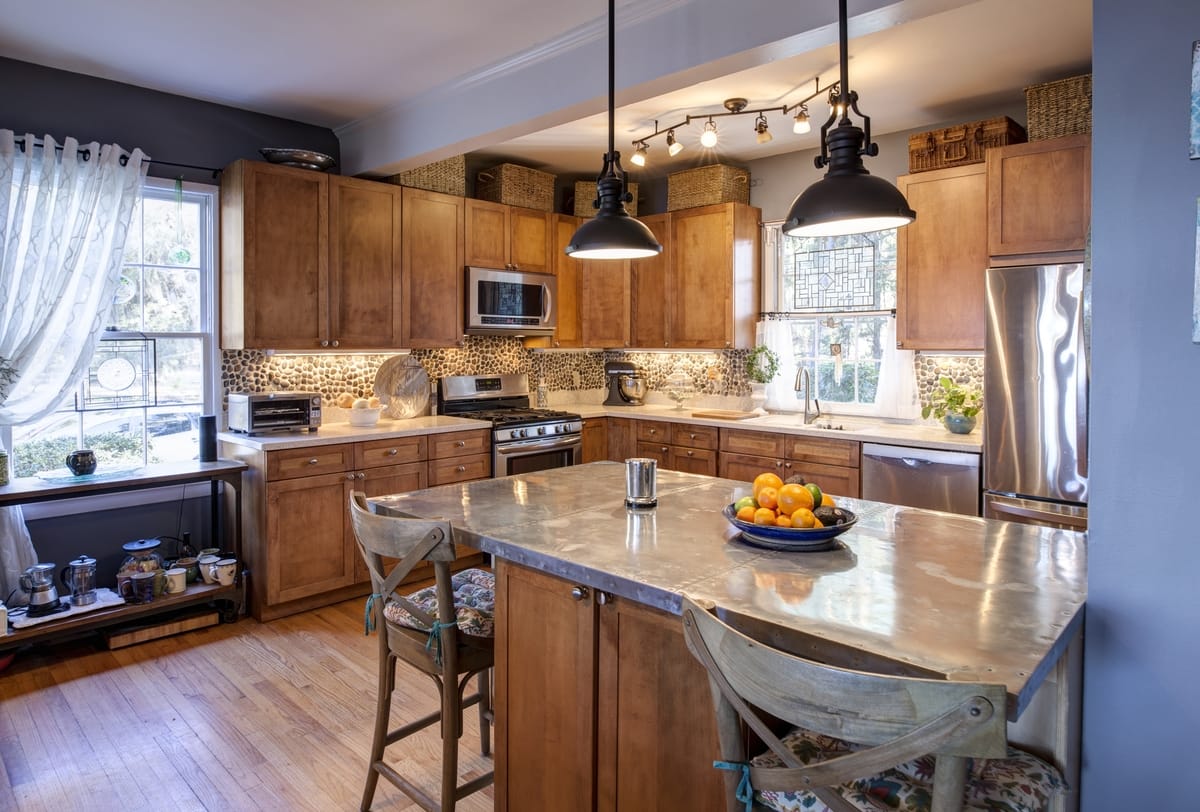
When you find something you like, ask for a sample so you can see what it will look like in your home, before you place an order.
4. Budgeting
Careful budgeting helps things to run smoothly. Include fitting costs, under-lays, fixtures and grouts as well as the flooring. Add a 10% contingency for when things go wrong.
5. Things to consider before laying a floor yourself
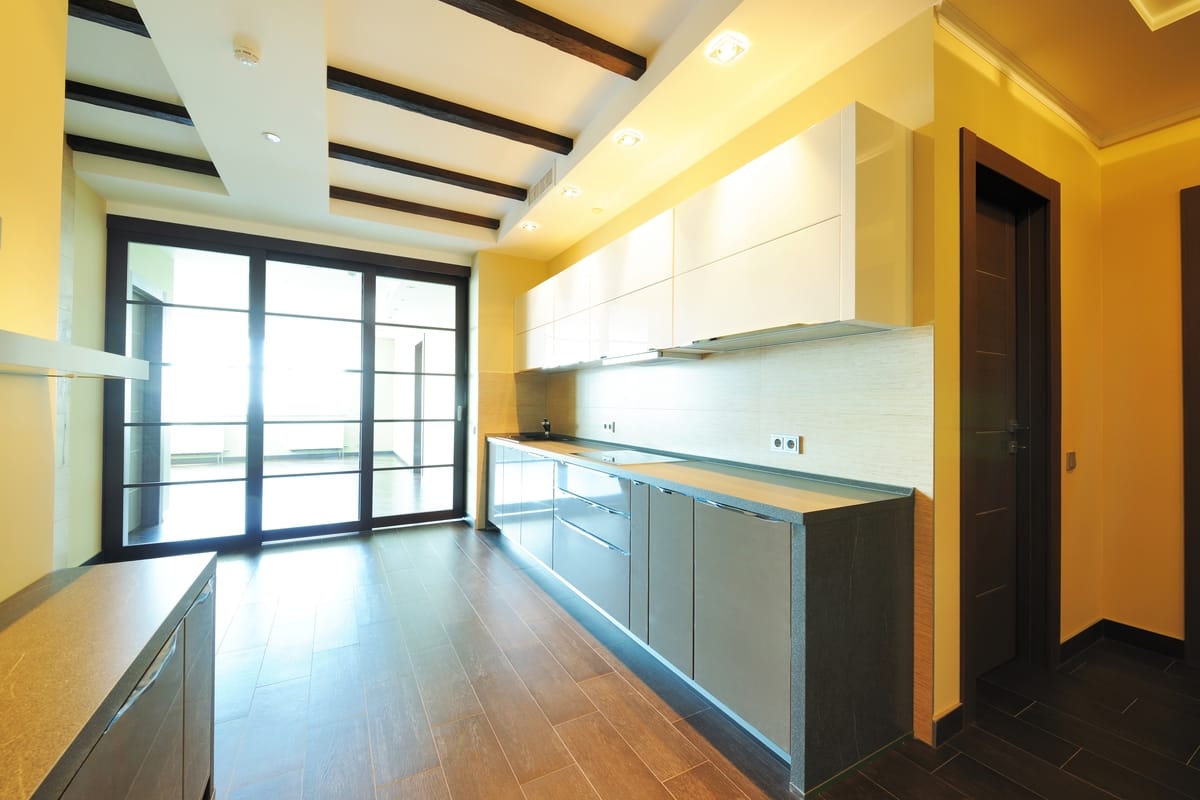
- Does the surface need to be prepared, can you do this yourself, do you have the right equipment, will you buy or hire it or should you leave it to a professional.
- Do you want under floor heating, if so does the flooring you like work with under floor heating.
- Do you want your flooring to go wall to wall, or only on the part of the floor seen once the units have been installed. If you go under the units then you can't replace the floors without pulling all the units out.
- Does the flooring need to be fitted before or after the units have been installed.
- Can you produce a high end finish you'll be satisfied with if you fit the floor yourself, or should you leave it to the professionals. Most professionals will prep floors before fitting new ones, which sorts out two tasks for you.
Types of flooring
Porcelain tiles
Porcelain floor tiles have sand added to the clay mixture and is made with heat and pressure to produce a tile that is harder, denser and less porous than other tiles. It is a great choice for high-traffic areas like a kitchen. This is the best choice if you want a maintenance free floor.
Ceramic tiles
Ceramic tiles can pretty much be used in every room in your home. For kitchen areas you need to make sure you have the glazed type so they are water resistant. Be aware more grouting has to be used between ceramic tiles than porcelain tiles, grouting also has to be sealed on a regular basis. Ceramic tiles are also cheaper than porcelain.
Stone flooring
Stone floor tiles come in a range of sizes, colours and textures and are so versatile they will complement any style of kitchen. However, stone is porous and will suffer some wear and tear, although there are some pretty effective sealants that can be applied to the stone to make it easier to maintain.
Solid wood flooring
Solid wood looks beautiful and it's a natural resource so can be recycled. However, as it is a natural product it can move, curl or split from heat, cold and moisture. If you still wish to use it in your kitchen it can be protected by using polyurethane, lacquer or natural linseed oil. These set hard, and seal and protect the wood for many years.
Engineered wood flooring
Solid wood floors are expensive, so if you need a cheaper alternative then engineered wood could be the perfect fit. The boards are created by layering a softwood or plywood base with a wood or wood effect top layer. The central core stops the top and bottom layers moving, meaning you don't have to worry about water spillages, making it suitable for kitchens.
Laminate Flooring
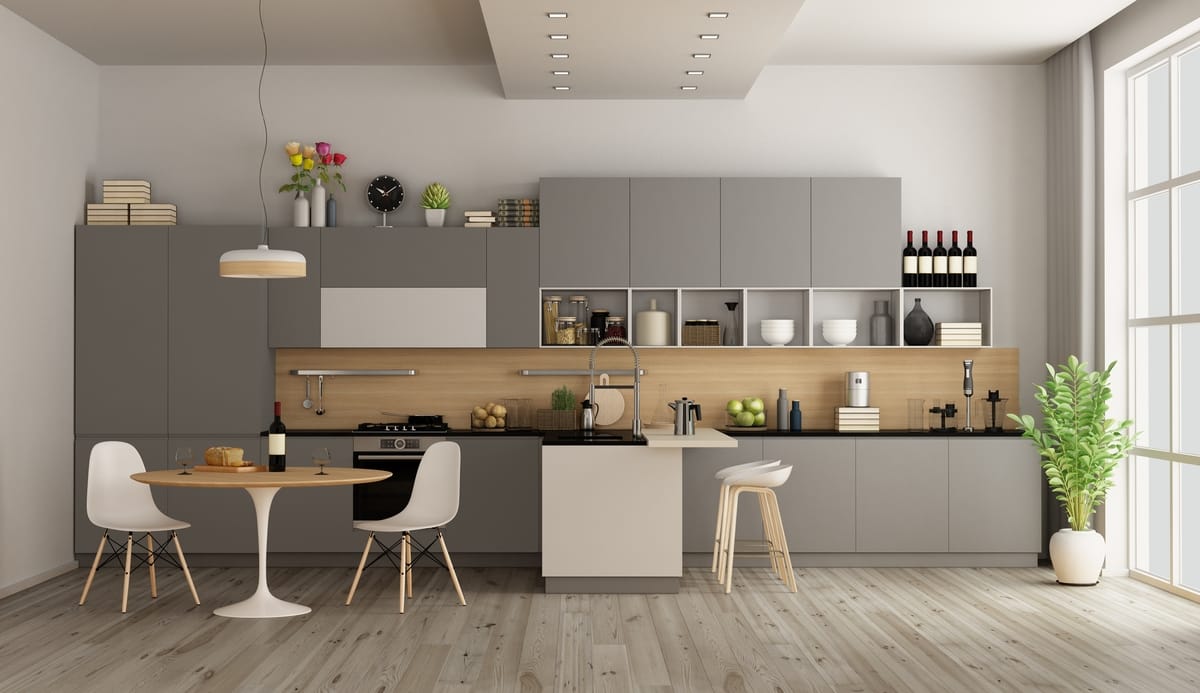
If you're on a budget and want an alternative to wood or stone then laminate flooring is a great option. It is usually easy to fit together and needs no particular skills to get a great finish. Not all laminate is suitable for damp environments, but more are becoming available, so check before you buy.
Laminate is a versatile product as it comes in so many different finishes, such as wood and stone. It also comes in many different sizes, such as long thin planks, wide planks and square planks that look like tiles. It is durable and can cope with high traffic areas. They have a huge price range, the cheaper you go the more likely the boards will have problems especially within a kitchen.
Concrete Flooring
If you enjoy the industrial look or want to add a contemporary edge to your kitchen then concrete flooring is for you.
Concrete can be poured directly onto the existing floor without having to do any levelling, once it is sealed it is low maintenance. It comes in a variety of colours as well as having lightweight versions for upper floors, although you should still seek the advice from a structural engineer.
Vinyl Flooring
If you can remember vinyl flooring from pre 1990's you don't need to worry. Vinyl flooring is now exceptionally hard wearing, comes in modern designs and can replicate the look and feel of anything from wood, stone and other natural materials. It is warmer and quieter underfoot than other flooring types.
Linoleum flooring
This is a great product for people with allergies. Bacteria and dust mites don't like it.
Lino feels like rubber but it is made totally from natural and sustainable ingredients. It is tough and resilient, yet warm to the touch and comfortable underfoot.
Where to invest your money in your kitchen
There are things you can save money on when building a new kitchen, such as units, handles and expensive features you'll never use. But flooring, doors and worktops are the areas you should spend the most because they have to work harder than the rest of the kitchen.
Here at Wychwood we prep floor surfaces and remove skirting broads ready for your new flooring. If you pop into our showroom in Basildon we can give you some knowledgeable advice about flooring, and show you what will work best for you.
Comments are switched off for this blog.